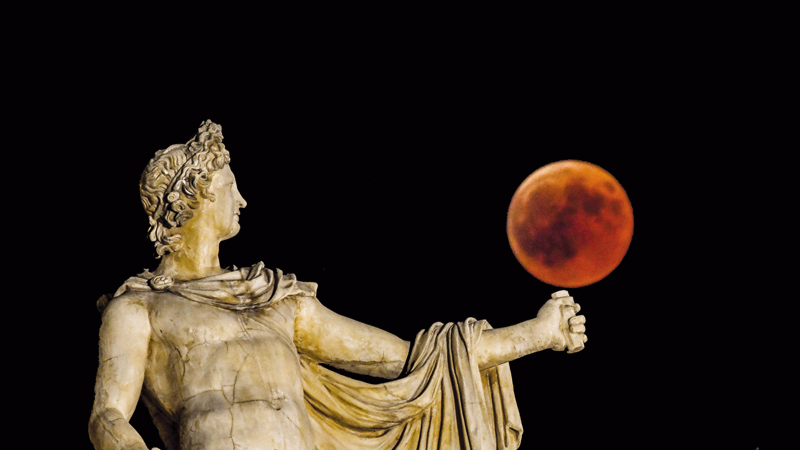


TITASH CHAKRABORTY -
Across the globe, millions of people witnessed the centuries longest lunar eclipse, also popularly known in the media as the infamous “blood moon’.
A lunar eclipse or a total eclipse of the Moon occurs when the Earth is sandwiched between the Sun and the Moon, blocking the sunlight from reaching Earth’s Luna. But because some light passes through the atmosphere, the light cast onto the Moon takes on an unsettling reddish-brown or blood red colour, and this is why you’ll hear total lunar eclipses sometimes called “Blood Moons.”
The phrase “blood moon” has some interesting effects on different cultures around the world often inspiring several striking myths and legends, many of which portray the event as an omen. Anything interrupts the regular rhythms of the sun or moon it impacts strongly upon us and our lives.
In many ancient civilisations, the “blood moon” is a warning sign of something ominous.
The ancient Inca people interpreted the deep red colouring as a jaguar attacking and eating the moon. They believed that the jaguar might then turn its attention to Earth, so the people would shout, shake their spears and make their dogs bark and howl, hoping to make enough noise to drive the Jaguar away.
In ancient Mesopotamia, a full lunar eclipse was considered a direct assault on the king. Given their ability to predict an eclipse with reasonable accuracy, they would put in place a proxy king for its duration. Someone would be asked to volunteer to sit in place of the king for the duration of the eclipse and once over, the proxy king would then conveniently disappear, and the old king was then reinstated.
Hindu folktales speak of a demon called Rahu and his attempt to drink the elixir of immortality. In an attempt to defeat him, twin deities the sun and moon promptly decapitate Rahu’s head, but having consumed the elixir, Rahu’s head remains immortal. Seeking revenge, Rahu’s head chases the sun and moon to devour them. If he catches them we have an eclipse — Rahu swallows the moon, which reappears out of his severed neck.
In most communities in India, a lunar eclipse bears ill fortune. Food and water are covered and cleansing rituals performed.
In several cultures, expectant mothers are advised to stay indoors when the Moon turns dark for fear it may curse their unborn child. They should also rest from housework, since using a knife or another sharp object is believed to cause birthmarks.
Christianity has equated lunar eclipses with the wrath of God and often associates them with the crucifixion of Jesus. It is notable that Easter is the first Sunday after the first full moon of spring, ensuring that an eclipse can never fall on Easter Sunday, a potential mark of Judgement Day.
The Native American Hupa and Luiseño tribes from California believe that the moon is wounded or ill. After the eclipse, the moon would then need healing, either by the moon’s wives or by tribesmen. The Luiseño, for example, would sing and chant healing songs towards the darkened moon.
The Batammaliba people from Togo and Benin in Africa, traditionally, view a lunar eclipse as a conflict between the sun and the moon — a conflict that the people must encourage them to resolve. It is, therefore, a time for old feuds to be laid to rest, a practice that has remained until this day.
In Islamic cultures, eclipses tend to be interpreted without superstition. In Islam, the sun and moon represent deep respect for Allah, so during an eclipse special prayers are chanted including a Salat-al-khusuf, a “prayer on a lunar eclipse”. It both asks Allah’s forgiveness and reaffirms Allah’s greatness.
Infamous mostly because of the cultural moon myths, the “blood moon” conspiracy was further popularised in 2013 following the release of the book Four Blood Moons by John Hagee — it promoted an apocalyptic belief known as the “blood moon prophecy” highlighting a lunar sequence of four total eclipses that occurred in 2014/15. Although discredited, since then the media has taken it upon themselves to add a negative connotation to a simple lunar eclipse!
Oman Observer is now on the WhatsApp channel. Click here



